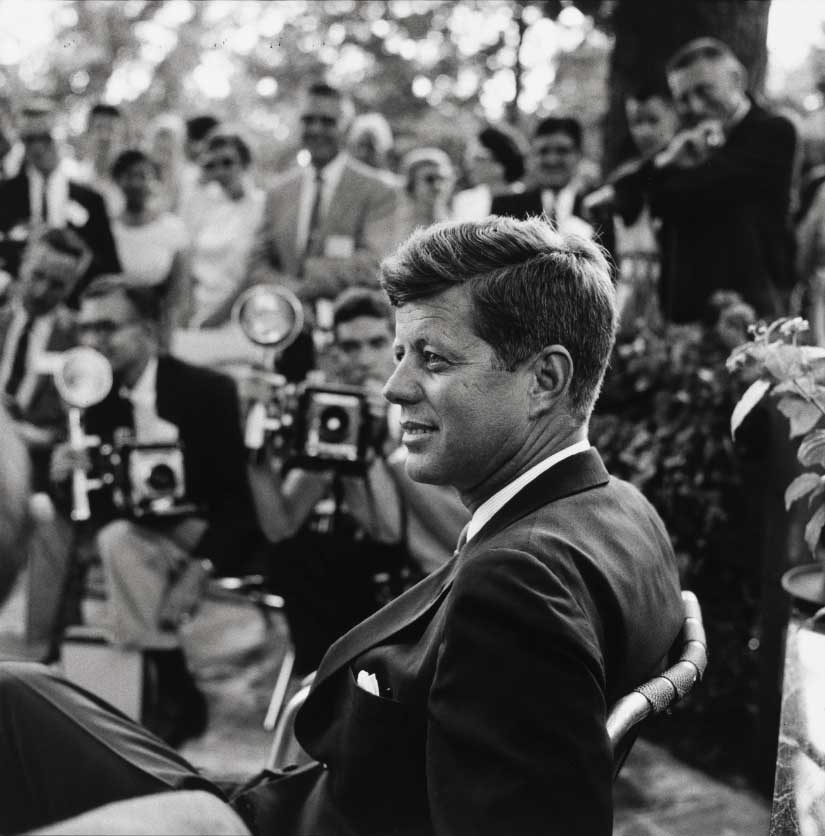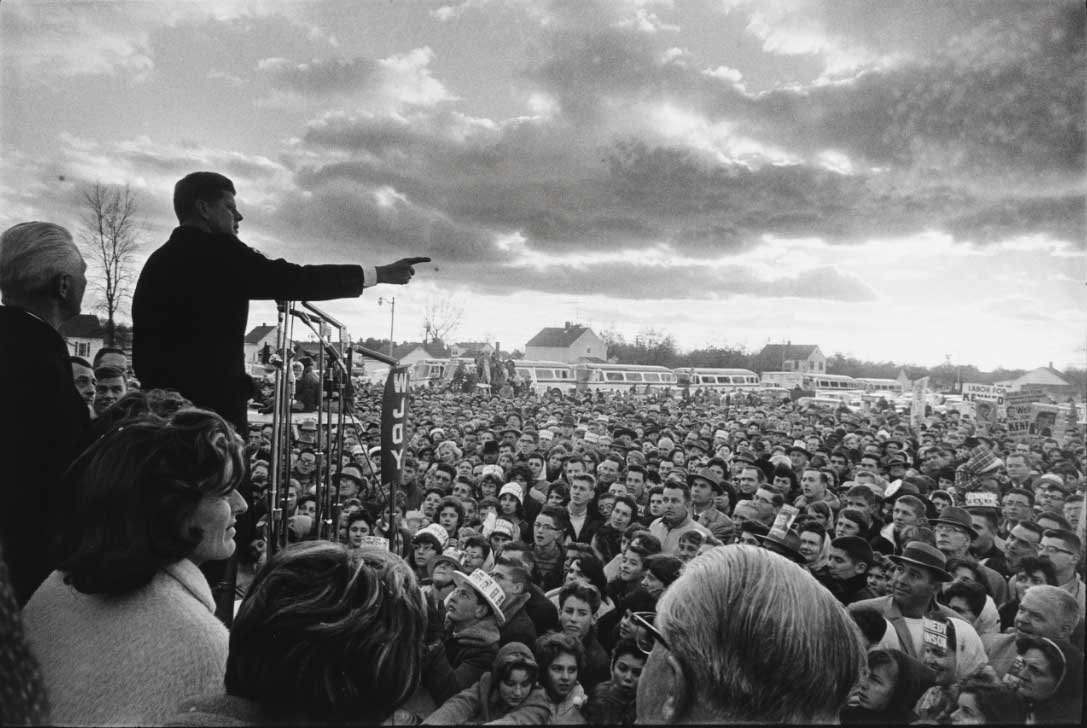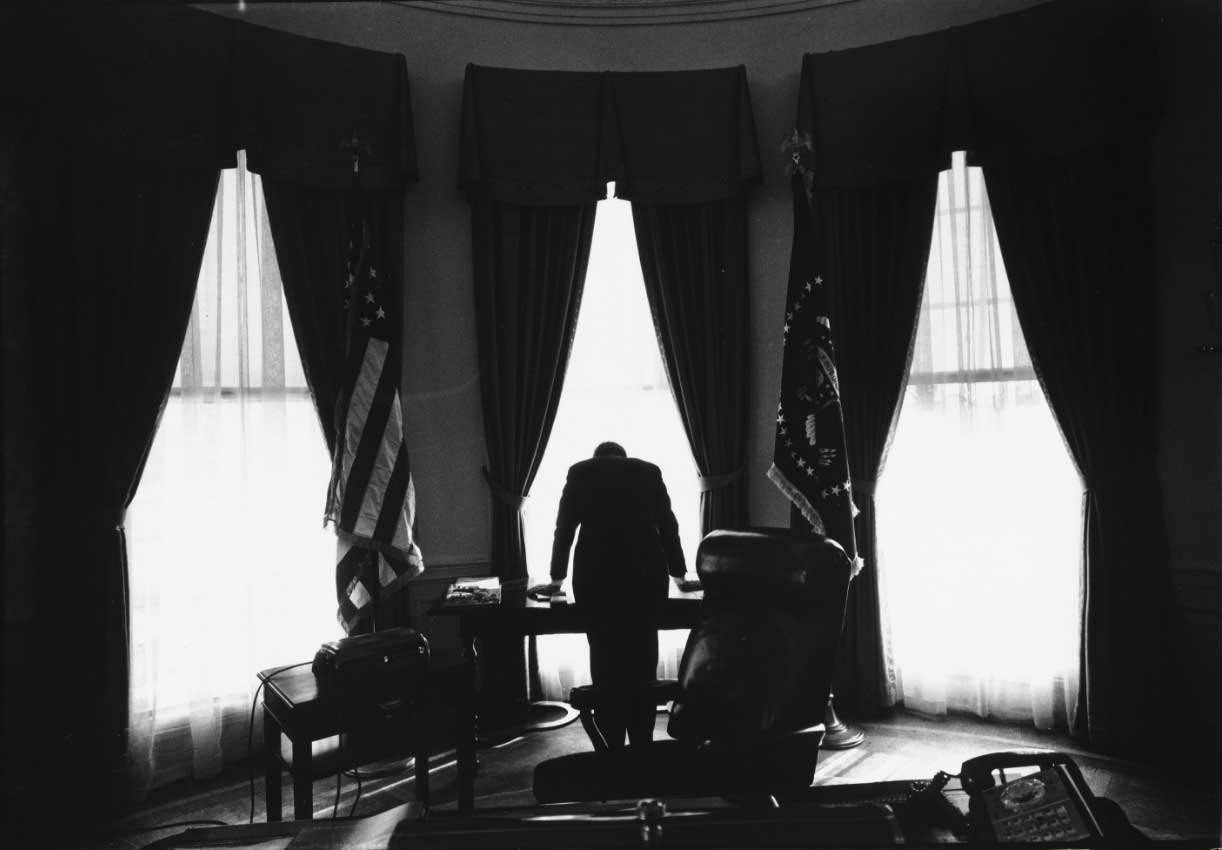Forever Young: The Existential Style of Jack Kennedy

As we commemorate the 100th anniversary of his birth, it is impossible to imagine Jack Kennedy as an old man. Everything about him was energetic, dynamic, and youthful. And of course, assassination on November 22nd stopped JFK’s life and indelibly fixed his image in the American mind as the forceful president who promised to reinvigorate not just American government but American culture.
The Kennedy election was the rebellion of the junior commanders (he was a navy lieutenant during World War II) who led from the front against the rear echelon generals and admirals who simply managed the fighting. (President Eisenhower was unfairly pictured as a rather absent minded, tongue tied presence – certainly not as the forceful Ike of World War II.) Kennedy’s trademark gesture when he spoke was the jabbing forefinger with which he emphasized and punctuated both his informal remarks and formal speeches. He ran on the platform of “getting the country moving again” and that thrusting finger was the physical embodiment of his mind-set, goading people into motion.

The forcefulness of the Kennedys – their impatience – was at the bedrock of their political careers, especially for JFK but also with his brothers Bobby and Ted. The Kennedys got things done and were disdainful of precedent or organizations or habit. Kennedy created the Green Berets because he thought the Army was hidebound. During the Cuban Missile Crisis he relied on the ExCom committee to deal with the Soviets, freezing out the State and Defense Department bureaucrats.
Yet Jack Kennedy always acted in public by deliberately contrasting that imperative finger gesture with a relaxed languor: an elegant style that proclaimed “I’ve got this” or “Don’t sweat it.” Kennedy was fond of Hemingway’s description of courage as “grace under pressure.” He had the habit of putting one of his hand in the jacket pocket of his impeccably tailored, single button suits.
Aggression was masked with an air of effortless cool. JFK was the political crystallization of an evolution in post-War style, combining features from the fictional James Bond to French existentialism’s acting in the moment to Frank Sinatra. Skinny ties and Ray Bans: Did the Rat Pack – Frank, Sammy et al -- influence JFK? Or was it the other way around? Or most likely was it just part of the culture as people recovered from the hardship and sacrifices of the war, cutting loose and expressing themselves.
It helped, of course, that Kennedy had an incredibly glamorous partner, Jacqueline Bouvier Kennedy who helped make style and taste matter for Americans. And of course the attraction of and between beautiful people was an added frisson to Kennedy’s charisma as America underwent yet another revolution in sexual mores.

We know now that the style and glamor of the Kennedy years were in some senses a deception: the incredibly vigorous president had chronic conditions that made even sitting painful; his urbane style masked a very turbulent sexual history; Jackie to the contrary, he was not interested in culture. In public policy, avoiding the bureaucracies in government created dangerous precedents as the Executive governed in an impromptu and unsystematic manner; the Lone Cowboy was a powerful American myth but not the best model for governance. Yet the allure of the Kennedy personality endures because he embodies, through the way he lived and then through his tragic death, the promise of a future in which nothing will ever grow old.